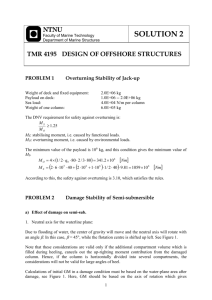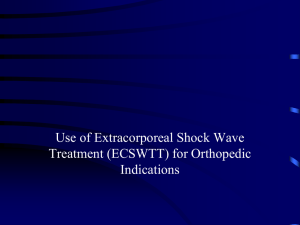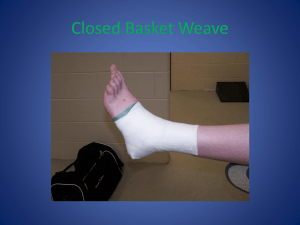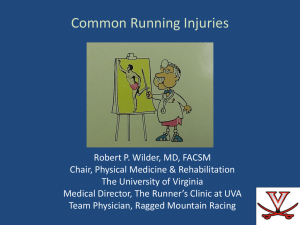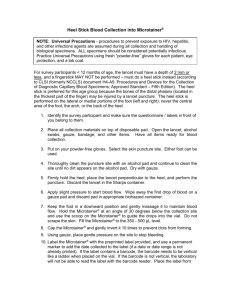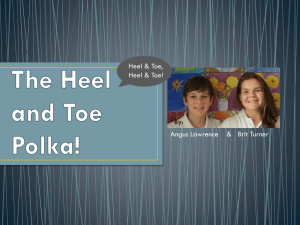Chapter 9. Intact Stability Criteria
advertisement
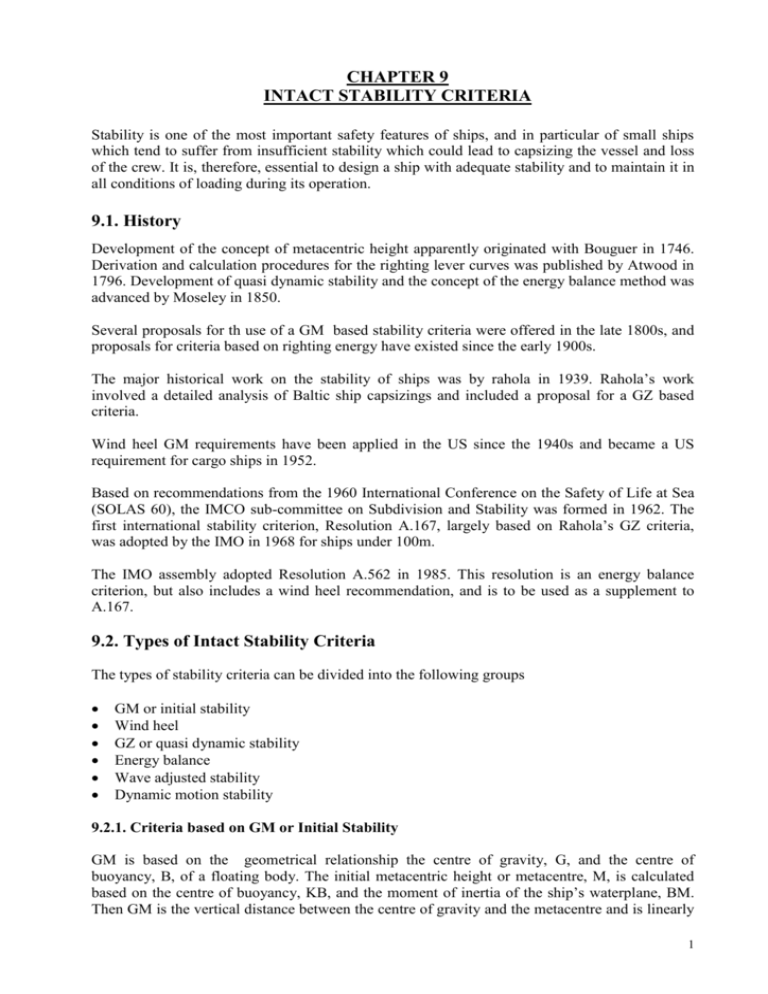
CHAPTER 9 INTACT STABILITY CRITERIA Stability is one of the most important safety features of ships, and in particular of small ships which tend to suffer from insufficient stability which could lead to capsizing the vessel and loss of the crew. It is, therefore, essential to design a ship with adequate stability and to maintain it in all conditions of loading during its operation. 9.1. History Development of the concept of metacentric height apparently originated with Bouguer in 1746. Derivation and calculation procedures for the righting lever curves was published by Atwood in 1796. Development of quasi dynamic stability and the concept of the energy balance method was advanced by Moseley in 1850. Several proposals for th use of a GM based stability criteria were offered in the late 1800s, and proposals for criteria based on righting energy have existed since the early 1900s. The major historical work on the stability of ships was by rahola in 1939. Rahola’s work involved a detailed analysis of Baltic ship capsizings and included a proposal for a GZ based criteria. Wind heel GM requirements have been applied in the US since the 1940s and became a US requirement for cargo ships in 1952. Based on recommendations from the 1960 International Conference on the Safety of Life at Sea (SOLAS 60), the IMCO sub-committee on Subdivision and Stability was formed in 1962. The first international stability criterion, Resolution A.167, largely based on Rahola’s GZ criteria, was adopted by the IMO in 1968 for ships under 100m. The IMO assembly adopted Resolution A.562 in 1985. This resolution is an energy balance criterion, but also includes a wind heel recommendation, and is to be used as a supplement to A.167. 9.2. Types of Intact Stability Criteria The types of stability criteria can be divided into the following groups GM or initial stability Wind heel GZ or quasi dynamic stability Energy balance Wave adjusted stability Dynamic motion stability 9.2.1. Criteria based on GM or Initial Stability GM is based on the geometrical relationship the centre of gravity, G, and the centre of buoyancy, B, of a floating body. The initial metacentric height or metacentre, M, is calculated based on the centre of buoyancy, KB, and the moment of inertia of the ship’s waterplane, BM. Then GM is the vertical distance between the centre of gravity and the metacentre and is linearly 1 related to the righting arm by the sine of the heel angle. Since the sine of a small angle is approximately equal to the angle and since the metacentre is relatively stationary for small angles of heel, GM can also be expressed as the initial slope of the righting arm curve. As such, it provides a realistic approximation of the resistance of a vessel to small angles of heel in the manner of a linear spring constant, M H GM , where MH is the heeling moment, is the equilibrium heel angle, and is the displacement. GM is the most basic stability criterion and one of the earliest methods used to quantify a ship’s stability. Specification of a minimum value of initial GM and freeboard sufficed as the sole numerical stability criterion in use until 1940s. Many national and international regulations have a minimum GM as one component of their requirements since a value of GM is easy to calculate, its meaning is relatively simple to understand, and the effect of its magnitude on the heel response is readily predictable. However, since the position of the metacentre varies as the ship heels, GM is only a valid measure within small angles of the initial unheeled position. In most cases, GM tells surprisingly little about the character of the vessel at other than very small angles of heel. GZ Cargo vessel Tug Heel angle Figure 9.1. The use of GM based criterion on two different types of ships, shown in Figure 9.1, serves well to illustrate the problem in choosing criteria to represent a type of rather than a form of vessel. The much greater initial GM of the tug is misleading. The high value of initial GM does not reflect the tug’s greatly shortened range of positive stability compared with a conventioanl cargo vessel, or its low value of maximum righting arm and low value of the angle at which that maximum occurs. The principal strength of GM based criteria lies in their simplicity and their accuarcy in predicting equilibrium heel angles when very specific heeling moment descriptions can be provided. For this reason, GM has been widely used in the past in criteria that establish a 2 maximum heel angle under the influence of such forces as those due to lateral wind loading, towline pull, lifting heavy weights over the side, passenger group movements, steady high-speed turning, and others. Despite these shortcomings, GM is still used as a useful stability criteria for special cases. Typical examples of specific GM based stability criteria are give below Passenger vessels : For passenger vessels, the US Coast Guard require the satisfaction of the following minimum GM value GM R Nb 24 tan where GMR : required minimum metacentric height at any particular draught (ft) N : number of passenger ships b : distance from vessel’s centreline to geometrical centre of passenger deck area on one side of centreline (ft) : displacement, long tons : angle of heel to deck edge or 14 degrees, whicever is less Towing Forces : Towing related stability hazards have commonly been divided into two categories; those relating to the tendency of a towing vessel to overturn itself under the influence of the heeling couple created by the opposing towline pull and propeller forces, and those relating to the tendency for the tow to veer off and create an unexpectedly large transverse component of force on the tug with a large upsetting moment resulting. Typically, the tug induced tripping situation, or self-tripping, has been considered to be the controlling one, based on two reasons. First, the tow-induced mechanism is extremely difficult to quantify since it involves a large number of unknown parameters such as towing speed, relative headings of the tug and tow, towline length, relative sizes of the tug and tow, and the position of the towing bitt. Secondly, the current trend toward increased power in towing vessels reduce the response time in the operator’s margin for error and increases the available heeling force of propeller thrust dramatically, without significantly altering the typical vessel’s ability to resist the resulting upsetting moment. As a consequence, the self-tripping case has been more thoroughly examined, and a fundamental analysis has generated some simple relationships. The basic form of classical tug-induced tripping relationships is exemplified by the Argyriadis formula: GM R SHP h f 100 B (ft ) where SHP f B h : shaft horsepower per shaft : displacement, long tons : minimum freeboard along the length : molded beam : vertical distance from propeller shaft centreline at rudder to towing bitt 3 In this relationship it is assumed that the towline is directly athwartships and that the rudder is put hard over with full power applied. The height h is used to represent the distance between the centre of underwater resistance and the towing bit, and the maximum amount of heel is related to the function of freeboard divided by beam, f/B. In order to account for multiple screws, the effect of propeller diameter, and the effect of rudder area, Murphy modified the basic form as follows: NSHP D GM R f 76 B where N D S 2/3 Sh (ft ) : number of screws : propeller diameter : fraction of propeller circle cylinder intercepted by rudder turned to 45 deg The Murphy criterion assumes that with constant power an increase in the propeller diameter will result in an increase in thrust and therefore an increase in the heeling moment, provided the effect of the rudder area is assumed to remain constant. The US Coast Guard used the Murphy criterion until 1971, when the factor of 76 in the denominator was changed to 38, resulting in a twofold increase in the required GM. The only tow-induced tripping criterion based on GM that was included in a survey of towing criteria by Miller is a standard proposed for use in Norway which was experimentally derived by towing a model with a block coefficient of 0.5 sideways at a speed of 4 knots. The standard requires GM R h1 5f d 2 ( m) where h1 d f : height of towing bitt above waterline : draught : minimum freeboard along length In general, the major criticism of all the foregoing towing vessel criteria is that they are valid only at angles of heel less than about 7 degrees. As long as these relationships are used to limit the angle of heel to less than that at which downflooding might occur through hull openings, they may be satisfactory. But when these expressions attempt to predict the response of a vessel near the heel angle which will cause capsizing, their use is both arbitrary and inaccurate. A more sound approach for larger angles of heel is based on balancing the heeling moment induced by either the tug or tow with the available righting moment below a critical angle, such as either the angle of downflooding or the threshold of capsize. This criterion is described in the following sections. Fishing Vessels : The IMO simplified criterion for fishing vessels under 30 m in length is expressed as follows 4 2 f B f GM R 1.7388 2B 0.075 0.37 0.82 0.014 0.032 B D L B where B f D L (ft ) : beam at waterline : minimum freeborad along length : minimum depth : length of superstructure : waterline length 9.2.2. Criteria based on Wind Heel Wind heel criteria are based on the principle of a heeling moment created by a pressure on the lateral profile of a ship coupled with a drag force on the underwater hull. This heeling moment is evaluated against the righting moment (either based on GM or the righting lever) to limit heel to a specified angle. An example of a wind heel criterion is the USCG wind heel criterion. Under this method, the minimum required GMR is given by GM R PAh (feet ) tan where 2 L P : is in the form x BP (tons/ft2) and represents pressure on the projected lateral surface 14200 of the vessel due to a steady beam winf. The value of x varies depending on the area of vessel opeartion and has units of tons/ft2. x = 0.005 for oceans, coastwise service, and for the Great lakes in winter x=0.0033 for partially protected waters such as lakes, bays, sounds and for the Great lakes in summer x=0.0025 for protected waters such as rivers and harbours LBP : Length between perpendiculars (ft) A : Projected lateral area of vessel above waterline (ft2) : Displacement, long tons h : Vertical distance from centroid of A to half-draught point (ft) : Angle to ½ freeboard or 14 deg (0.24 rad), whichever is less The heeling moment being resisted is the couple created by the force due to beam wind pressure distributed over the exposed lateral area of the vessel and the resisting drag force of the submerged hull, assumed to be acting at the half-draught point. The limitation of maximum heel as one-half the freeboard is intended to allow for wind gusts, wave action, and rudder forces. The use of angles near the upper limit of 14 deg (0.24 rad) in this relationship may lead to questionable results, however, since the nonlinearity of righting arms with heel angle is well established by this point. 5 9.2.3. Criteria based on GZ or Quasi Dynamic Stability The International Conference on Safety of Life at Sea, 1960, recognizing the importance of the stability of ships, recommended that IMCO should undertake studies on intact stability of passenger ships, cargo ships and fishing vessels, with a view to formulating such international standards as may appear necessary. In pursuance of the above recommendation, the Inter-Governmental Maritime Consultative Organization established in 1960 the Sub-Committee on Sub-division and Stability which was charged, among others, with the task of studying the intact stability of passenger ships and cargo ships. As a result of the Sub-Committee’s comprehensive studies on existing national requirements, on results of analyses of intact stability casualty records and on stability calculations of ships which have operated successfully, a Recommendation on Intact Stability for Passenger and Cargo Ships under 100 metres in length was drawn up. This Recommendation was approved by the Maritime Safety Committee in March 1968 and adopted by the Assembly of the Organization at its fourth extraordinary session in November 1968. The following criteria are recommended for passenger and cargo ships under 100 m in length: The initial metacentric height GM0 should not be less than 0. 15m. The area under the righting lever curve (GZ curve) should not be less than 0.055 metreradians up to = 30° angle of heel and not less than 0.09 metre-radians up to = 40° or the angle of flooding f if this angle is less than 40°. Additionally, the area under the righting lever curve (GZ curve) between the angles of heel of 30° and 40° or between 30° and f , if this angle is less than 40°, should not be less than 0.003 metre-radians. The righting lever GZ should be at least 0.20m. at an angle of heel equal to or greater than 30° The maximum righting arm should occur at an angle of heel preferably exceeding 30° but not less than 25° GM GZ GZmax A2 A1 0 15 30 40 57.3 Meyil açısı 6 The following additional criteria are recommended for passenger ships: The angle of heel on account of crowding of passengers to one side should not exceed 10°. The angle of heel on account of turning should not exceed 10° when calculated using the following formula: M R 0.0 V2 d KG L 2 where: MR V L d KG : heeling moment in metre-tons : service speed in m./sec., : length of ship at waterline in m., : displacement in metric tons, : mean draught in m. , : height of centre of gravity above keel in m. The criteria fix minimum values, but no maximum values are recommended. It is advisable to avoid excessive values, since these might lead to acceleration forces which could be prejudicial to the ship, its complement, its equipment and to the safe carriage of the cargo. For ships loaded with timber deck cargoes and provided that the cargo extends longitudinally between superstructures transversely for the full beam of ship after due allowance for a rounded gunwale not exceeding 4 per cent of the breadth of the ship and/or securing the supporting uprights and which remains securely fixed at large angle of heel, an Administration may apply the following criteria in substitution for criteria given above: the area under the righting lever (GZ curve) should not be less than 0.08 metre-radians up to = 40°or the angle of flooding if this angle is less than 40. ‘’ is an angle of heel at which openings in the hull, superstructures or deckhouses which cannot be closed weathertight immerse. In applying this criterion, small openings through which progressive flooding cannot take place need not be considered as open. The maximum value of the righting lever (GZ) should be at least 0.25 m. at all times during a voyage the metacentric height GM0 should be positive after correction for the free surface effects of liquid in tanks, and, where appropriate, the absorption of water by the deck cargo and/or ice accretion on the exposed surfaces. Additionally, in the departure condition the metacentric height should be not less than 0.10 m. 9.2.4. Criteria based on Energy Balance The concept of the energy balance method is that the restoring energy or area must be equal to or greater than the capsizing energy. Integration of the righting arm curve is interpreted to represent righting or heeling energy. An example of an energy balance criterion is the IMO resolution A.562. This criterion is recommended for all ships over 75 m and was approved by IMO in 1985. The vessel is assumed to heel to a static heel angle, 0 , under the action of a steady wind heeling lever, Lw1. Resonant rolling of the vessel is assumed with an amplitude 1 about the equilibrium position 0 . A gust wind heeling lever Lw2 is then applied. If the righting energy b exceeds the capsizing energy a, the vessel meets the criterion. 7 The criterion also recommends that under the action of the steady wind heeling lever Lw1, the angle of heel shall not exceed 16 degrees or 80 percent of the level of deck edge immersion, whichever is less: PAZ 1.5L w1 L w1 ( m) Lw2 ( m) where P A Z 1 2 = 0.0514 (t/m2) : projected lateral area of portion of ship and cargo above waterline (m2) : vertical arm from centre of A to centre of underwater lateral area (m) : displacement (t) : roll angle : angle of downflooding or 50 deg or c, whichever is less. c is the angle of second intercept between wind heeling lever Lw2 and the GZ curve. GZ b Lw2 Lw1 a Meyil açısı 2 o o 1 8 Exercise . Check whether the IMO stability criteria are satisfied or not for a ship with following particulars: LOA LBP B D KG KB BM : 65.225 m : 59.200 m : 10.000 m : 4.950 m : 1529 t : 3.691 m : 1.905 m : 2.400 m 0. Heel (deg) KZ (m) 10 0.736 20 1.442 30 2.100 40 2.663 1. Heel (deg) KZ (m) 10 0.746 20 1.452 30 2.110 40 2.673 2. Heel (deg) KZ (m) 10 0.756 20 1.462 30 2.120 40 2.683 3. Heel (deg) KZ (m) 10 0.766 20 1.472 30 2.130 40 2.693 4. Heel (deg) KZ (m) 10 0.776 20 1.482 30 2.140 40 2.713 5. Heel (deg) KZ (m) 10 0.786 20 1.492 30 2.150 40 2.723 6. Heel (deg) KZ (m) 10 0.796 20 1.502 30 2.160 40 2.733 7. Heel (deg) KZ (m) 10 0.806 20 1.512 30 2.170 40 2.743 8. Heel (deg) KZ (m) 10 0.816 20 1.522 30 2.180 40 2.753 9. Heel (deg) KZ (m) 10 0.826 20 1.532 30 2.190 40 2.763 9
